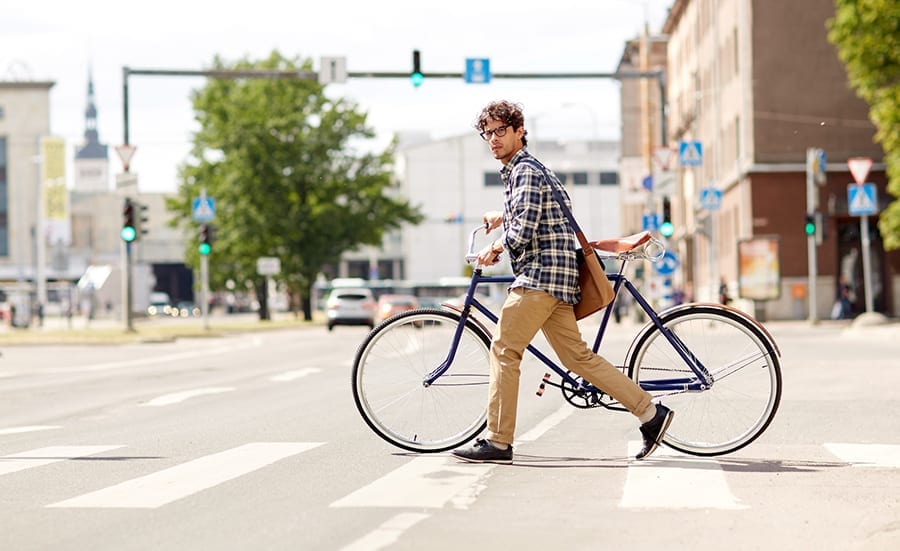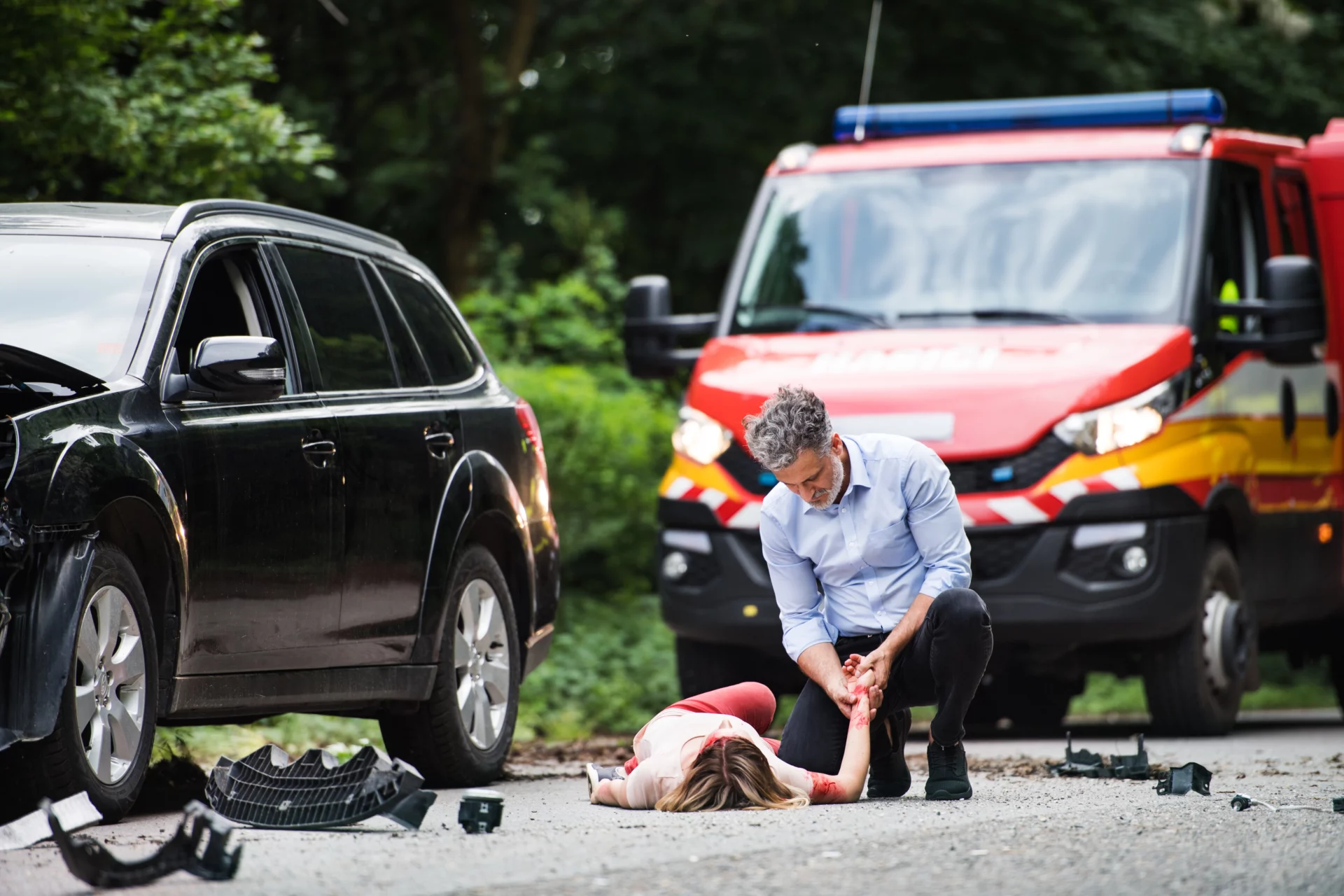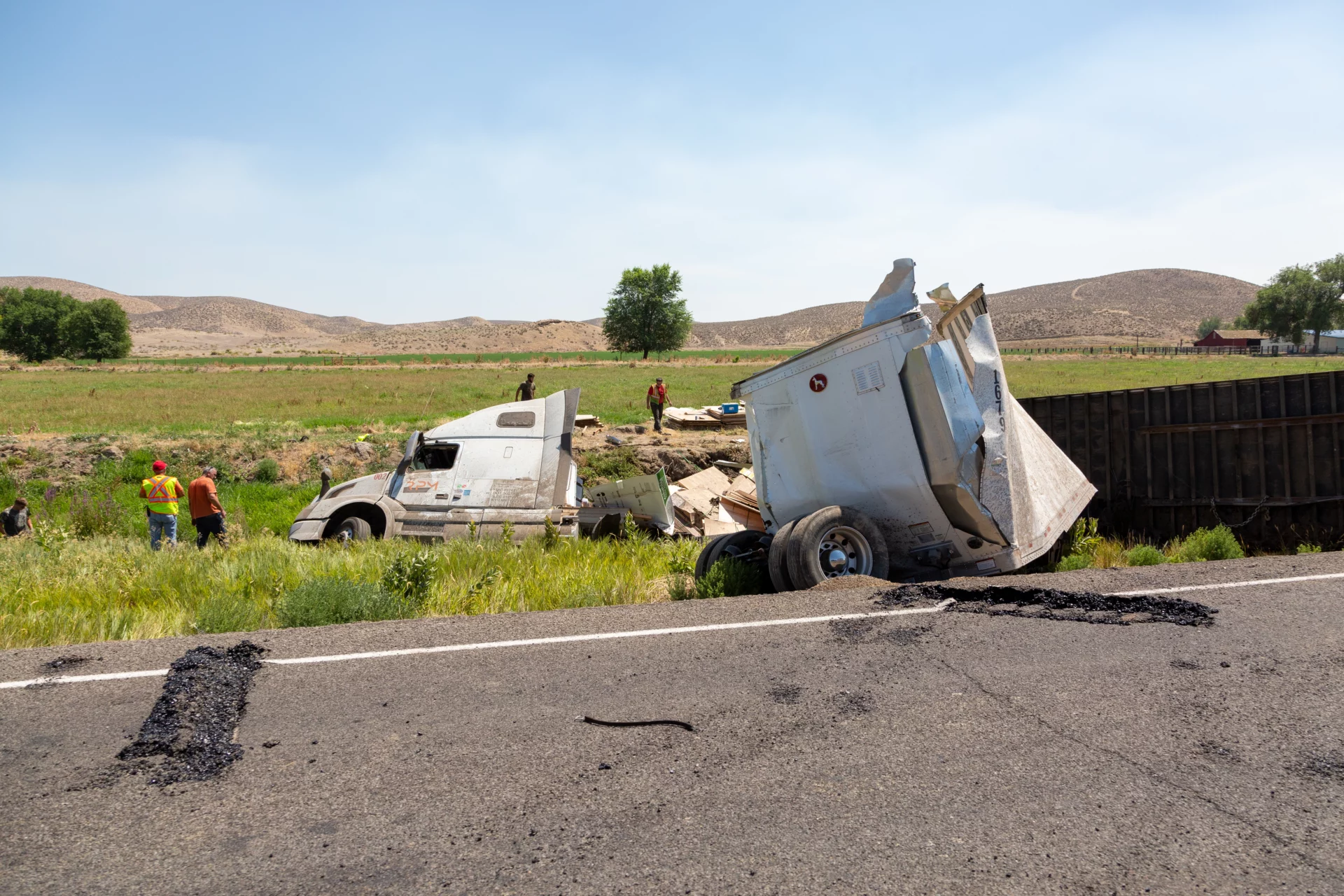
Back in March, the world seemed to all-but shut down due to the pandemic; schools closed, office buildings sat empty, and even professional sports arenas went dark. But as we begin to return to some semblance of normal, with schools across the country re-opening and millions of adults heading back to the workplace, nationwide traffic is increasing. The congested city streets so common to New Jersey and New York are certainly no exception.
When it comes to traffic accidents, in many ways, it’s a number’s game. More cars on the road means more collisions. And accidents don’t only involve other motor vehicles; pedestrians and bicyclists are also at an increased risk of serious injury and death in collisions with cars and trucks.
Biking in NJ and NY Can Be Dangerous: Tips to Keep You Safe While Biking
In the wake of the COVID-19 stay-at-home orders that began in March, bicycle sales skyrocketed across the country. With gyms closed, a massive drop in youth sports, and millions of jobs going remote, it should come as no surprise that people began looking to biking for alternative forms of exercise, family bonding time, and local transportation (with the reduction, or disappearance, of long commutes). In fact, according to bicycleretailer.com, bike sales were up 75 percent in April, and sales continue to surpass previous years even now.
But with the recent increase in cars and trucks on the road coinciding with a substantial overall increase in cycling these past few months, there are bound to be more bicycle-motor vehicle collisions. In fact, in New York City, cyclist and pedestrian injuries had increased before the return to school and work.
During lockdown, there were significantly less cars on the road, yet speeding and reckless driving skyrocketed. Unfortunately, now that traffic levels are slowly ramping back up to normal, accidents involving pedestrians and cyclists are expected to increase as well. Although biking can be a healthy, economical, and environmentally-conscious mode of recreation, exercise, and transportation, it is far from risk-free.
28 Cyclists Fatalities in NYC & NJ This Year
On September 10, a 29-year-old cyclist was the 13th person killed in NYC, and the fourth killed already this month. The unnamed cyclist, who was struck by a 2020 Camaro SS while biking in Brooklyn, died at Maimonides Hospital. The other three cyclist fatalities that occurred within the first 10 days of September involved collisions with an MTA bus, a private charter bus, and a pedestrian. In New Jersey, 15 cyclists have been killed statewide this year.
If you have been injured in a cycling accident, the skilled bike accident lawyers at Kreizer law can help. We have been protecting the rights of cyclists in New York and New Jersey for years, and our experienced legal team has an impressive track record of obtaining substantial settlements for our clients. While we would love for everyone to stay safe, if you do find yourself in an accident resulting in an injury please contact us for a free and confidential consultation about your case.
Biking Safety Tips
Despite the sobering (and disturbing) statistics above, the news isn’t all bad; the vast majority of these fatalities are easily preventable when cyclists follow a few important safety tips. Although you can never eliminate every risk, by utilizing the safe practices below, you can dramatically reduce your risk of being seriously injured or killed in a biking accident. With nearly 40 million cyclists (and growing), and approximately 467,000 annual bicycle-related injuries in the United States, safety awareness really is a life or death situation.
- Always wear a helmet. This one is first for a reason; helmets save lives. But even though helmets are 90 percent effective in preventing traumatic brain and other head injuries, and nearly 70 percent of all cyclist fatalities involve a head injury, only about 20 percent of cyclists report always wearing a helmet.
- Don’t bike and text. Never use your cell phone or engage in other distracting behaviors when riding your bike. And in that same vein, it’s a good idea to avoid wearing earbuds, headphones, or anything else that will restrict or reduce your ability to hear while biking.
- Dress to be seen. The brighter and more colorful your gear, the easier you will be to spot. And when it’s dark, enhanced visibility is even more important; wear reflective clothing and equip your bike with a front and rear safety light.
- Avoid adverse weather when possible. If the forecast calls for heavy rain, ice, or snow, don’t bike unless you absolutely must. Bad weather conditions can limit visibility and dramatically increase your risk of slipping, sliding, and getting seriously injured.
- Have a riding buddy. Whenever possible, ride with at least one other cyclist. For starters, two bikes are easier to see than one. Furthermore, if you are involved in an accident, there will be an extra set of hands to help (or eyes to serve as a witness).
- Take the safest route. The quickest way to your destination isn’t always the safest. Try to leave plenty of time to get from point A to point B so that you can avoid rushing. For starters, running late is a mental distraction in and of itself. Plus, excessive speeds and unsafe short cuts significantly increase your risk of serious injury or death.
- Never drink and bike. This should go without saying, but according to the National Highway Traffic Safety Administration (NHTSA), 25 percent of the 782 cyclist fatalities in 2017 involved an alcohol-impaired cyclist.
- Always ride with traffic. When walking, it’s often safest to walk against traffic to see who is coming your way, but this same logic doesn’t apply to bicyclists. For starters, riding against traffic makes it extremely difficult (and dangerous) to make a right turn. Secondly, cyclists are 3.6 times more likely to be involved in an accident when riding on the left.
- Avoid using outdated hand signals. Out with the old and in with the new—signal that you are about to turn left by holding your left arm out, and signal that you wish to turn right by holding your right arm out.
- Always keep both hands on the handlebars. This will help you to keep your balance, which is especially important if you encounter an emergency situation.
- Make eye contact with oncoming drivers. This is important, but don’t rely on eye contact alone. Instead of just looking for eye contact, see if you can gauge the driver’s behavior—does he/she look focused, distracted, fidgety, etc.?
- Be prepared to yield. The fact that you might have the right of way means nothing if the motor vehicle driver barreling toward you is distracted, doesn’t notice you, or chooses not to share the road with bicyclists. When a car is approaching, make sure that you are riding slowly and cautiously enough to get out of the way if doing so becomes necessary.
- Use extra caution at intersections. Most bicycle accidents occur in intersections, so be particularly vigilant when crossing one.
- Never pass on the right. If you attempt to pass a slow moving car on the right and the driver decides to make a right turn or change lanes, the outcome could be deadly.
- Ride in designated bike lanes whenever possible. This should go without saying; if there’s a bike lane, use it.
- Avoid riding through or over road hazards. Gravel, sand, puddles, potholes, roadkill, and construction debris can all spell disaster for even the most experienced cyclists. Avoid these hazards at all costs.
What to Do if You’ve Been Injured in a Cycling Accident
If you are injured in a cycling accident, step one is to call 911. In addition to coordinating emergency medical treatment if necessary, law enforcement can file an official police report, which may prove invaluable if you decide to file an injury lawsuit.
If you are able to do so, ask all involved parties for their insurance and contact information, and ask witnesses for their contact information in case questions arise at a later date.
Photograph any visible injuries and the scene of the accident, including any contributing factors, such as skid marks left by the vehicle, loose gravel, or a stop sign that is blocked from sight by an overgrown tree.
Seek medical attention following the accident, even if injuries aren’t immediately apparent. Certain serious injuries, including soft tissue damage and internal bleeding, can take days or even weeks to produce visible symptoms. In addition to ensuring your health and safety, a record of medical treatment will be helpful if you decide to bring a lawsuit against the at-fault party.
Stay Safe Out There
Despite the risks, bicycling can be an excellent form of exercise, a refreshing way to get out of the house, and a great environmentally friendly form of transportation for students and commuting adults alike. While we would love for everyone to stay safe, if you do find yourself or a loved one in an accident resulting in an injury while biking, please contact us for a free and confidential consultation about your case.
We hope that these bicycling tips and advice help our readers to stay healthy and safe during these unusual times.










